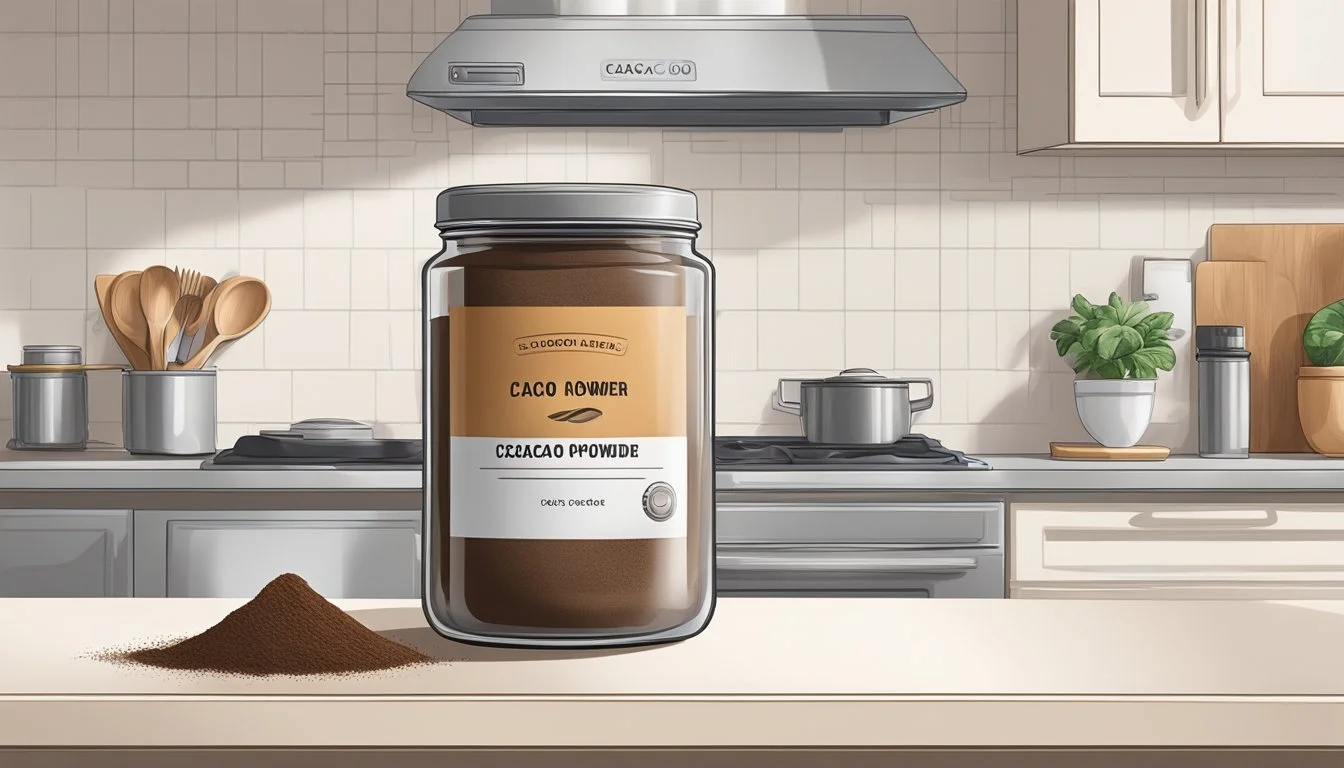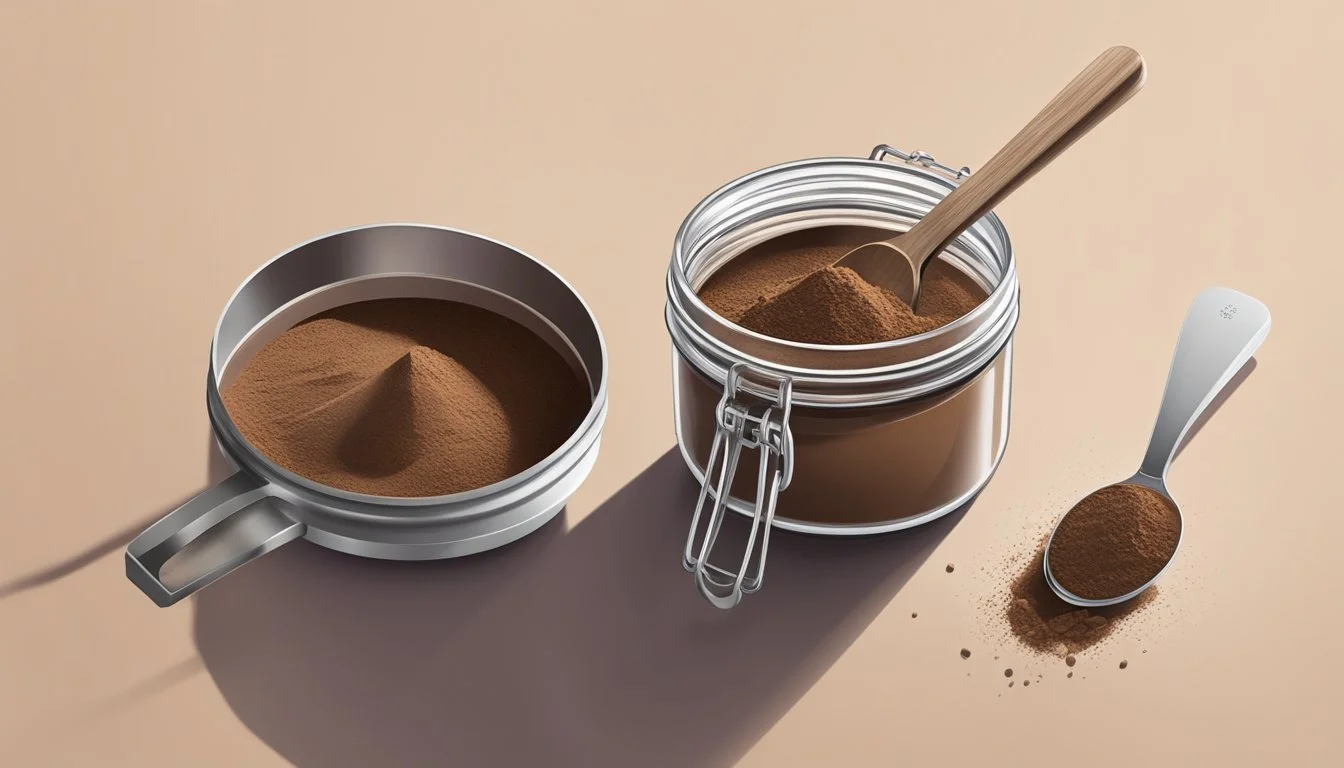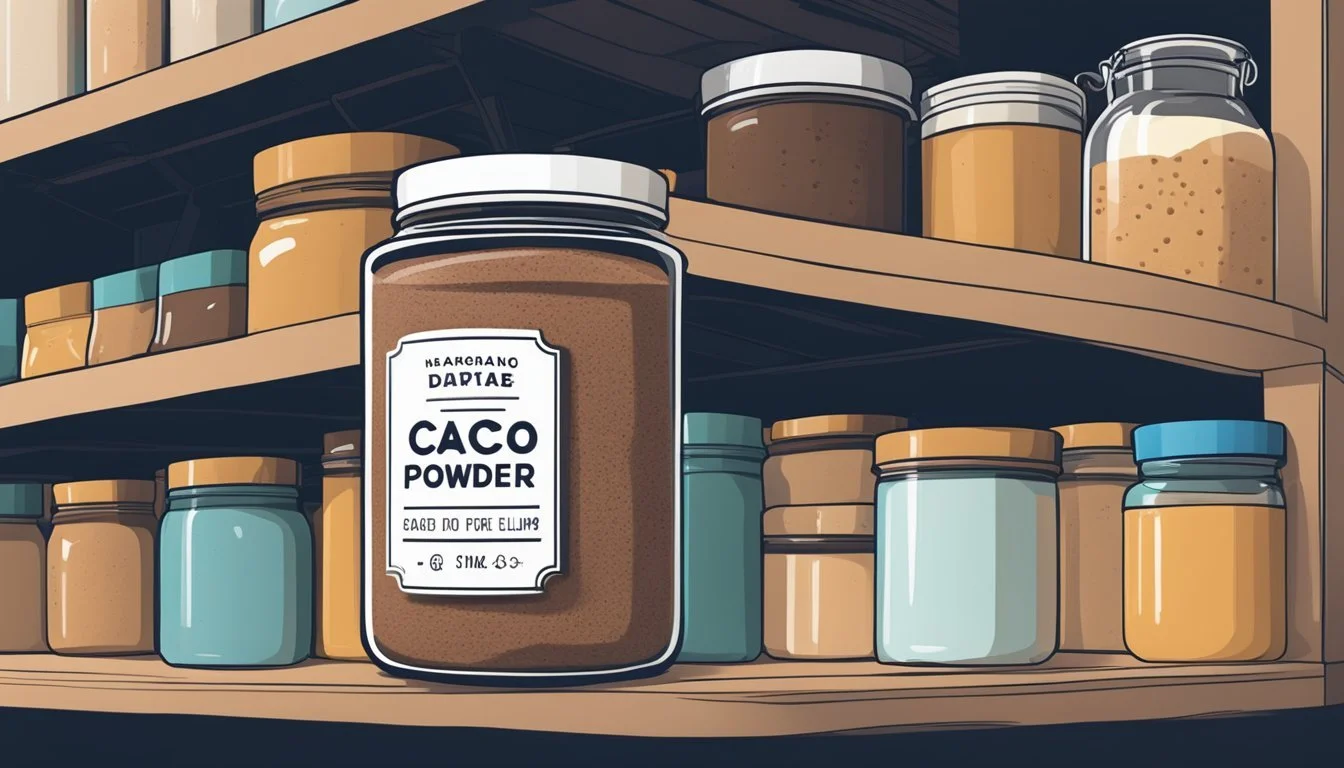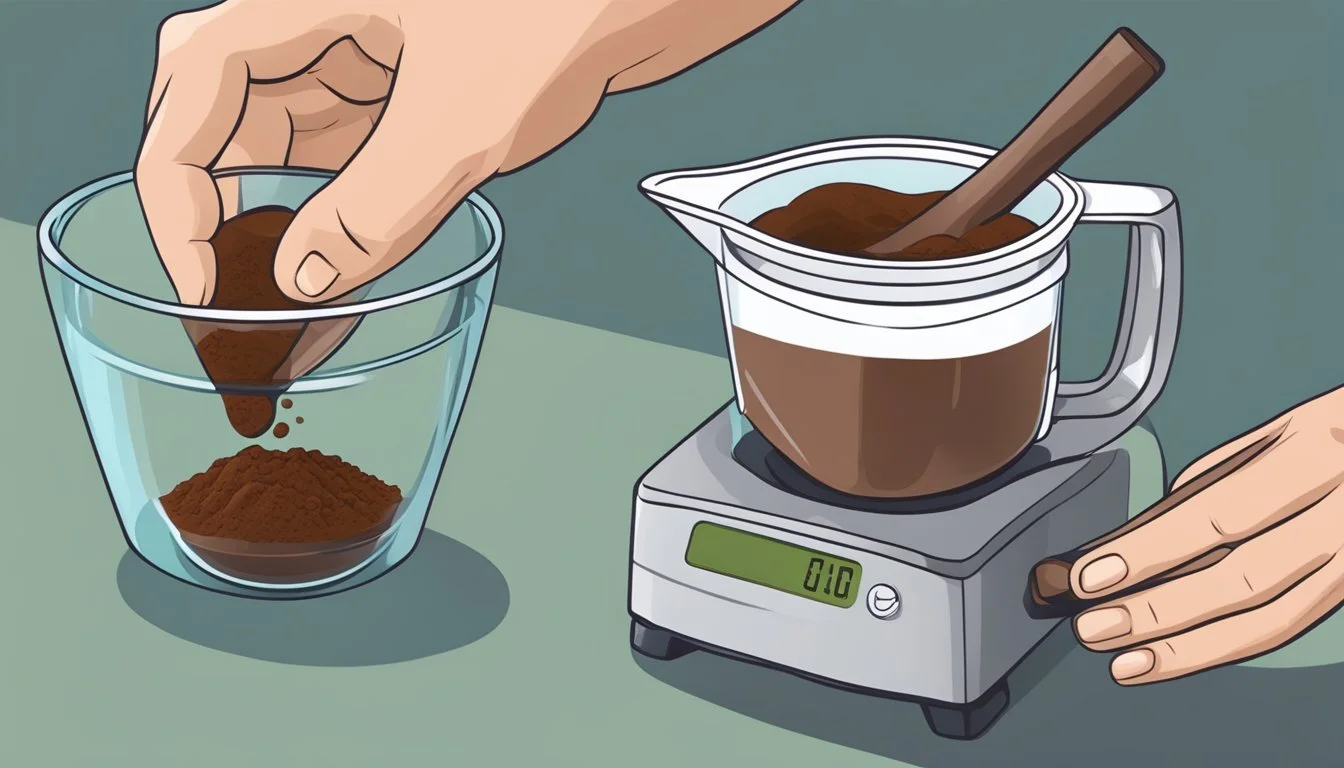Does Cacao Powder Go Bad?
Shelf Life and Storage Tips
Cacao powder, a staple ingredient in chocolate products and baked goods, is often assumed to have an indefinite shelf life due to its dry nature. However, while it doesn't spoil in the traditional sense, meaning it won't cause illness if consumed past the best-by date, cacao powder can degrade in quality over time. The primary indicator of its longevity is how it is stored. Properly sealed in a cool, dry, and dark environment, cacao powder can retain its desired qualities for extended periods.
Shelf life is a concern for any edible product, and cacao powder is no exception. It may not become inedible, but there can be a noticeable decline in the potency of its flavor and aroma, which are quintessential to its contributions to culinary delights. As cacao powder ages, it may also lose some of its healthful properties, which are a significant aspect of its appeal. Home cooks and professional chefs alike rely on the rich, deep flavors of cacao powder to deliver the expected chocolatey experience in their creations.
Although cacao powder does not experience spoilage in the way that dairy or fresh produce might, it's still important for consumers to be aware of how its quality can change over time. Indications that cacao powder may be past its prime include a lackluster smell, a change in color, or the presence of clumps that suggest moisture has been introduced. Users can typically trust their senses to determine if the cacao powder is still potent enough for their recipes.
Understanding Cacao Powder
Derived from the beans of the cacao tree, cacao powder is renowned for its rich flavor and health-promoting properties, especially in relation to heart health and inflammation. This powdered form is indispensable in various culinary applications and offers a wealth of antioxidants.
Origins and Composition
Cacao powder originates from the seeds of Theobroma cacao, a tree native to the Amazon region. The seeds, commonly referred to as cacao beans, undergo a process involving fermentation, drying, roasting, and finally grinding to create a fine, richly flavored powder.
Key Components:
Theobromine: a stimulant that can improve mood and energy.
Flavonoids: antioxidants that contribute to health benefits.
Magnesium: essential for various body functions.
Fatty Acids: present in small amounts, contributing to the powder's rich texture.
Health Benefits
Cardiovascular Health: Regular consumption of cacao powder may positively affect heart health by improving blood flow and reducing blood pressure. The presence of flavonoids in cacao has been associated with these benefits.
Antioxidant Properties: Cacao is packed with antioxidants, which help counteract oxidative stress and may reduce the risk of chronic diseases.
Anti-inflammatory Effects: The antioxidants in cacao also have anti-inflammatory properties that can contribute to overall health maintenance.
While cacao powder can be a beneficial addition to one's diet, it should be consumed in moderation due to its caffeine content and calorie density.
Shelf Life and Quality
Cacao powder typically retains its quality for a considerable time when stored properly. However, changes in its condition can indicate that it is no longer at its best quality.
Determining Expiration
Cacao powder does not come with a definitive expiration date, but it is generally recognized that it can last for several years. To assess whether cacao powder is past its peak quality, one can consider the "best by" date as a benchmark. This date suggests when the product may start to lose its potency, meaning its flavor and aromatic qualities may not be as strong.
Best By Date: Note this as a guide but not a strict rule.
Storage Practices: Proper storage plays a critical role in extending shelf life.
Signs of Spoilage
Identifying if the cacao powder has gone bad involves a sensory evaluation:
Visual Check: It should retain a rich, deep brown color. Presence of mold is a definitive sign that the cacao powder should not be consumed.
Smell: Cacao powder that has an off smell or lacks the characteristic chocolatey aroma may be an indication of degradation.
Taste: A rancid or stale taste is a signal that the cacao powder has spoiled and should not be used.
It is crucial to maintain the cacao powder in an ideal environment to preserve its shelf life and prevent spoilage.
Proper Storage Solutions
Maintaining the quality of cocoa powder relies on controlling environmental factors such as light, temperature, and moisture. Specific strategies ensure longevity and preserve flavor.
Ideal Conditions
Cocoa powder thrives in an environment that is consistently cool and devoid of humidity. Prolonged exposure to moisture can initiate clumping, mold growth, and compromise the cocoa powder's integrity.
Temperature: An ideal temperature range for cocoa powder storage is between 60°F (15°C) and 70°F (21°C).
Humidity: Strive for a low-humidity space to minimize the risk of moisture affecting the powder.
Light: Store away from light to prevent degradation of flavor and quality.
Using an airtight container is crucial for preventing the introduction of external odors, especially if opting for freezer storage.
Best Practices
The manner in which cocoa powder is housed can significantly impact its shelf life.
Airtight Containers: Seal cocoa powder in an airtight container to protect it from moisture and contaminants.
Location: Choose a cool, dry place such as a pantry or cupboard, far from heat sources and direct sunlight.
Refrigeration: It is not usually necessary but can be beneficial for extended storage and in warmer climates. Make sure that the container is airtight.
Freezer: For long-term storage, a freezer can be an option, but cocoa powder should be well packaged to avoid absorbing nearby odors.
Potential Impact of Spoilage
Spoilage of cacao powder can lead to altered flavor profiles affecting culinary applications and potential health risks if consumed.
Effects on Health
The introduction of moisture to cacao powder can foster the growth of mold. Consuming moldy cacao powder poses a risk of food poisoning, as some molds can produce harmful toxins. Ingesting spoiled cacao powder may result in unpleasant symptoms ranging from gastrointestinal discomfort to more severe reactions, depending on the individual's sensitivity and the extent of contamination.
Key health concerns include:
Risk of foodborne illnesses
Possibility of allergic reactions to mold
Effects on Baking and Cooking
Cacao powder is a staple in baking and cooking for its rich taste and color. However, when it goes bad, the most noticeable impact is the loss of flavor potency. Baked goods and dishes that rely on cacao powder for their chocolatey essence may turn out bland or lack the desired depth.
Consequences for culinary uses:
Diminished flavor intensity
Subpar coloration in finished dishes
Maximizing Cacao Powder Usage
When incorporating cacao powder into various recipes or aiming to extend its shelf life, one can deploy smart strategies to ensure optimal usage and maintain its quality.
Incorporation in Recipes
In the culinary world, cacao powder is a versatile ingredient, lending its rich, chocolate flavor to countless dishes. One can enhance the taste of their favorite recipes by incorporating cacao powder into baking and beverages, where it functions effectively. Baked goods like brownies and chocolate cakes gain a deep, chocolatey essence from the addition of cacao powder. For a healthful twist, cacao powder can be blended into smoothies or sprinkled over oatmeal, providing a nutritious start to the day.
Baking: Add 1-2 tablespoons to muffins or cookie dough for a chocolate kick.
Beverages: Whip into hot milk for a comforting hot cocoa or blend with coffee for a mocha flavor.
Smoothies: Combine with fruits like banana or avocado for a rich, creamy drink.
Oatmeal: Stir in a teaspoon with a drizzle of honey for an indulgent twist on breakfast.
It's worth noting that one should carefully balance the quantity of cacao powder in each recipe as its potent flavor can overwhelm other ingredients.
Longevity Tips
Ensuring the longevity of cacao powder primarily involves proper storage. The key is to protect it from moisture, heat, and light, which can all compromise its quality. It is recommended to store cacao powder in an airtight container in a cool, dark place, such as a pantry or cupboard. This method helps prevent the clumping and dulling of flavor that can occur over time.
Storage Tips Description Airtight Container Seals out moisture and preserves freshness Cool Place Detracts heat to maintain integrity Darkness Shields from light to keep flavor intact
Under these conditions, while the cacao powder does not spoil, its flavor quality might diminish past its expiration date, so it's beneficial to use it closer to the time of purchase. If the cacao powder exhibits an off smell, discoloration, or signs of mold, it should be discarded.
Types and Varieties
Cacao powder comes in distinct forms, each offering unique characteristics and uses in culinary applications. The variety chosen may affect both the nutritional content and the flavor profile of the finished product.
Raw vs Processed Cacao
Raw cacao powder is made by cold-pressing unroasted cacao beans, which preserves the natural enzymes and maximizes the powder's antioxidant content. It maintains a more bitter taste, reflective of the purest form of chocolate, and is often sought after for its health benefits.
Processed cacao powder, commonly available as Dutch-processed or alkalized cocoa powder, undergoes a heat treatment and is treated with an alkaline solution, which reduces its bitterness. This process darkens the powder and smoothens the flavor, making it a popular choice for baking. It's important to note that this processing method slightly lowers the antioxidant levels as compared to raw cacao.
Sweetened vs Unsweetened
Unsweetened cocoa powder is pure cocoa after the cocoa butter has been removed, with no additives. It's more versatile, used both in cooking and baking, and is preferred for its ability to allow for precision in sweetening to the cook's taste, whether they are creating a savory dish or a sweet dessert.
Sweetened cocoa powder already contains sugar and sometimes additional flavorings like vanilla. This type of cocoa powder simplifies the baking process and is typically used in drink mixes or quick recipes. However, it offers less control over the final sweetness and flavor balance of the dish, and may not be suitable for those monitoring sugar intake.
For dietary considerations:
Those looking for dairy-free options should ensure the absence of milk solids in their cocoa powder.
Dark chocolate enthusiasts might prefer unsweetened cocoa for its robust flavor, similar to that of high cacao content chocolates.
Each type of cacao powder imparts a different quality to recipes and choosing the right one is essential for achieving the desired result in both taste and texture.
Advanced Preservation Strategies
Properly preserving cacao powder extends its shelf life, maintaining its flavor and nutritional value. Advanced techniques such as freezing and vacuum sealing offer robust solutions to combat cacao powder degradation.
Freezing Techniques
When freezing cacao powder, one must ensure it is stored in airtight containers or freezer bags to prevent moisture contamination. They can follow these specific steps:
Place the cacao powder in an airtight container or a heavy-duty freezer bag.
Label the container with the current date to keep track of storage time.
The cacao powder should be used within six months to ensure freshness, even though it may be safe for consumption for longer periods.
Vacuum Sealing
Vacuum sealing is effective in extending the shelf life of cacao powder by removing air exposure. The detailed process includes:
Pre-measure doses and place them in vacuum seal bags to make future use convenient.
Use a vacuum sealer to extract all the air out of the bag, effectively creating an oxygen-free environment.
Store the sealed bags in a cool, dry place, away from direct sunlight.
This method can significantly prolong shelf life and maintain the cacao powder's quality over extended periods.







